Greetings!
I offer my early wishes for a Happy New Year.
As we close the book on 2024, I’ll also close the book on the 2024 Cardinals with my year-end season in review. Some matters remain unresolved – I’m referring to potential trades – but we have plenty of material to go through.
The Cardinals are in transition, and that process began in 2024.
I have 12 items for you.
They are not ranked in any particular order of importance.
1. CHAIM BLOOM ARRIVES: In hiring Bloom as a consultant – with the plan for him to take over as president of baseball operations after the 2025 season – the Cardinals went outside of the organization to make a substantial move for the first time since 2003. That’s when Cardinals chairman Bill DeWitt Jr. recruited Jeff Luhnow to modernize the team’s baseball department by installing an R&D operation to make the front office smarter in scouting, drafting, prospect development, analytics, and advanced methods of evaluating performance. Bloom came to St. Louis with a strong reputation earned during his extensive experience in Tampa Bay’s acclaimed draft and player-development model. Bloom’s first assignment: to reconstruct an outdated, underfunded and dilapidated minor-league system. It’s an urgent priority and Bloom is off to a promising start. DeWitt can only hope that Bloom will turn into Luhnow II. In 2024, DeWitt finally realized that their model — successful for so long —
2. THE END OF THE JOHN MOZELIAK ERA: Mozeliak’s term as the leader of the front office will expire after the 2025 season. In Mozeliak’s first eight seasons (2008-2015) as the head of the baseball department, the Cardinals ranked first in the NL and second overall for most regular-season wins, competed in more postseason games than any MLB team, and ranked second overall in postseason victories. The eight-year harvest produced two NL pennants, a World Series title, six postseason berths, and four appearances in the NL championship series.
And then came the decline; the last nine seasons have been dingy in comparison to Mozeliak’s success-loaded first eight years in the top job. Since 2016 the Cardinals have missed the playoffs more times (5) than they’ve made the playoffs (4.)
After winning 32 postseason games during Mozeliak’s first eight seasons, the Cardinals have a sad 4-11 postseason record over the past nine years. From 2011 through 2014, the Cardinals won seven postseason rounds plus a wild-card game. But over the past 10 seasons, the Cardinals have managed to prevail in only one postseason round, defeating Atlanta in the 2019 NLDS. Since that lone triumph the Redbirds went 1-9 in the playoffs. As the Mozeliak Era winds down, the Cardinals ranked 22nd in the majors and 11th in the NL with a .475 winning percentage over the last two seasons and are slashing payroll for 2025.
3. FAN UNREST IS INTENSIFYING: In 2024 the Cardinals sold 2.87 million tickets to their games at Busch Stadium. It was their lowest home attendance figure in a full season since the ballpark opened in 2006. It was the first time the Cardinals drew less than 3 million at home since 2003. It was their lowest yearly home attendance mark since 2.63 million in 1997. The franchise will almost certainly absorb another home-attendance blow in 2025 as the team scales down in a transition season. More and more fans are imploring DeWitt to sell the franchise. In my view that’s an overreaction, but fans are entitled to their own opinions and emotions.
4. TELEVISION WOES: The Cardinals’ local TV ratings continued to plummet in 2024, with the Cards establishing record lows in market viewership in each of the past two seasons. The TV situation also reached a new low in one other way: in 2024 the Cardinals will receive a payout that’s 23 percent less than agreed to in the original contract because of financial problems that plagued their distributor, Diamond Sports Group. In the restructuring, the Cardinals agreed to a new deal with the FanDuel Sports Network (formerly Bally Sports Midwest) to continue to broadcast STL games locally. As part of the revised contract, the Cardinals can now offer their games through a direct-to-consumer streaming service for the first time.
5. STAGNATION ON OFFENSE: The Cardinals were miserable offensively in 2024. Last season was the 29th under chairman Bill DeWitt Jr., and let’s take a look at where the ‘24 Cardinals ranked among those 29 teams:
Runs per game: tied for 26th
Batting average: 26th
Onbase percentage: 29th
Slugging percentage: 27th
OPS: 27th
Adjusted OPS: 21st
Total bases: 26th
Extra base hits: 26th
Times on base: 27th
Ugh! Several obvious factors led to the downturn. The hitting performances by cornerstones Paul Goldschmidt and Nolan Arenado declined significantly. The next generation of stars – Jordan Walker and Nolan Gorman – crashed. Willson Contreras, the team’s best hitter, played in only 84 games because of injuries. Outfielder Lars Nootbaar — capable of can be an impact bat — missed too many games (again) because of assorted ailments. And the Cardinals were the worst team in the National League in the crucial test of hitting with runners in scoring position. In fact, their .229 team batting average with RISP was the worst by a Cardinals team during the expansion era which began in 1961.
6. GOLDY GONE: This is part of the transition: bidding farewell to a respected, beloved player who has gotten older and less impactful. Goldschmidt’s five-year contract extension expired at the end of the 2024 campaign, and the Cardinals decided to move on. For the most part Goldschmidt distinguished himself as a Cardinal from (2019-2024) leading the team in home runs, RBIs, runs scored, slugging percentage, OPS, doubles and extra base hits over the six-season – and he was second in batting average, onbase percentage, and stolen bases. Goldschmidt’s time in St. Louis peaked when he won the NL’s Most Valuable Player award in 2022. He also received MVP votes in three other seasons and collected a Gold Glove and Silver Slugger award. But after playing a major role in the Cardinals’ 2019 NLDS victory over Atlanta, Goldy batted .128 with a 37 percent strikeout rate in his final 10 postseason games for St. Louis. The Cardinals lost nine of the 10 games. Good luck to Goldschmidt – a class act – as he joins the Yankees on a one-year contract for 2025.
7. ARENADO IN LIMBO: As I type this on Monday morning, we still don’t know if Arenado will be playing third base for the Cardinals in 2025. As part of their payroll-slicing “reset,” the Cardinals are trying to trade Arenado and a good portion of his remaining salary. The Cardinals and Astros were nearing completion on a trade that would have sent Arenado to Houston – but alas, he exercised his no-trade clause to veto the deal. Given his age (34 next season) and obvious decline in power, the trade market for Arenado seems to be limited … maybe even extremely limited.
If the Cardinals can’t move Arenado before the start of the season, it will upend their plan to play Nolan Gorman at third base in 2025. And if that happens, Gorman would have to shift back to second base and also be part of the rotation at designated hitter. With Gorman set up as the regular second baseman, it means less time there for Brendan Donovan and rookie Thomas Saggese. And if Arenado stays around, his presence will likely lead to other actions. Arenado is due to receive $64 million from the Cardinals over the next three seasons. The raw total is $74 million, but his former team, the Rockies, are taking care of $10 million of the cost.
Arenado’s contract would impact the payroll reduction plan that’s already in effect. That means the Cardinals would likely have to trade a pitcher or two to help offset the salaries owed to Arenado.
Trade candidates include pitchers Erick Fedde, Steven Matz, Ryan Helsley, Miles Mikolas and perhaps Sonny Gray. Mikolas and Gray have no-trade clauses. Gray has said he wants to stay here. He’s due salaries of $25 million in 2025 and $35 million in 2026. If the Cardinals could move Gray for prospects, would he reconsider? Mikolas is due nearly $18 million in 2025 but his trade value is limited. (And again, he has no-trade protection.) Fedde’s contract has one season to go at a salary of $7.5 million and he can become a free agent at the end of 2025. Matz ($12.5 million) is injury prone. How many teams want to take that risk? And the Cardinals seem strongly inclined to keep Helsley, their valuable closer.
Arenado and the Cardinals are on hold until former Astros third baseman Alex Bregman signs a free-agent deal. Once Bregman chooses a new employer, we could see a team or two pivot to Arenado after losing out on Bregman. That’s the theory, anyway.
* CODA: Goldschmidt and Arenadao spent four seasons as teammates in St. Louis. The Cardinals did not win a postseason game during the four seasons, losing all three showdowns while struggling terribly on offense. In the three playoff losses Goldy and Arenado were a combined 2 for 22 (.091) with no extra-base hits or RBIs. They did, however, combine for seven strikeouts in the three defeats.
8. RYAN HELSLEY: No doubt about it, Helsley was the team MVP in 2024. The dominant closer set a franchise record by locking down 49 saves, and his superb 92.5 percent success rate in save opportunities was the best in the National League. Helsley’s 92.5% was the best by a STL closer since Trevor Rosenthal saved 48 games in 51 opportunities (94%) in 2015. How important was a factor in the Cardinals’ winning season? The Cardinals were the NL’s best team – and tied for second overall with a 69-1 record (.986) when leading through eight innings. And consider this preposterous statistic: excluding Helsley, the other Cardinal relievers combined for only six saves in 30 attempts for an alarmingly poor save rate of 20 percent. No wonder why the St. Louis front office is strongly inclined to keep Helsley around in 2025, even though he can become a free agent after the season.
9. MASYN WINN: The dynamic rookie led MLB shortstops with 14 defensive runs saved and was a finalist in the Gold Glove voting. Winn, however, received a more prestigious award by winning the Fielding Bible prize as the best defensive shortstop in all of major-league baseball. Based on the Baseball Reference version of Wins Above Replacement (shorthand: bWAR), Winn not only led National League rookie position players in WAR, but he also was tied for sixth among all NL position players behind Shohei Ohtani (Dodgers), Matt Chapman (Giants), Francisco Lindor (Mets), Ketel Marte (Diamondbacks) and Elly De La Cruz (Reds.)
Winn logged 150 games, played a load of innings, and wore down offensively during the final month. Through the end of August he batted .283 with a .330 onbase percentage and .423 slug for a .753 OPS. Winn’s value to the ‘24 Cardinals was summed up by this number: the Redbirds were 10 games over .500 – 77-67 – when Winn started at shortstop.
Winn was ignored – absurdly so – in the NL Rookie of the Year voting. In addition to leading all major-league rookies in defensive bWAR, Winn ranked No. 2 among big-league rookies in bWAR offensively. As I wrote in November: When you are first in defense and second in offense turned in by ALL big-league rookies, shouldn’t that make you one of the three Rookie of the Year finalists in the National League?
10. THE COLLAPSE OF WALKER AND GORMAN: Walker had a very good rookie season in 2023, finishing comfortably above the league standard in batting average (.276), onbase rate (.330) slugging percentage (.445) and OPS (.787). And he did all of that at age 21 after never playing above the Double A level in the minors.
For his part in 2023, Gorman (at age 23) clouted 27 home runs, produced 76 RBIs, slugged a robust .478, and finished 16 percent above league average in adjusted OPS.
And what about 2024? Oh, my. Walker hit .201, was 29 percent below the league average offensively, was brutal defensively in right field – and got demoted to Triple A Memphis for an 84-game stretch.
After peaking with a .508 slugging percentage and .829 OPS on June 4, Gorman spiraled to a .170 batting average, meager .511 OPS and a grotesque 40.3 percent strikeout rate in his final 54 games before being relegated to Memphis.
There is no way to finesse this; both of these young Cardinals – who are so essential to the team’s success – had disastrous seasons. This raised questions about their long-term quality and potential to develop into star-level hitters. The 2025 season will be a huge “prove it” showcase for Walker and Gorman.
11. THE RISE OF QUINN MATHEWS: The esteemed Baseball America chose Mathews as the Minor League Pitcher of the Year for 2024. Yes. Mathews impressively ascended his way through four minor-league levels last season, leading all minor-league pitchers with 202 strikeouts in 143 innings. As Baseball America noted, at the age of 23 Mathews made at least four starts at four different levels—but never more than nine before earning his next promotion. Overall the lefty with the wizard changeup pitched to a 2.76 ERA in 26 starts. He became the Cardinal to receive the top minor league honor from Baseball America since Rick Ankiel was Minor League Player of the Year in 1999. We can look forward to seeing Mathews pitch in St. Louis in 2025; his arrival is just a matter of time.
12. THE EXCITEMENT OF JJ WETHERHOLT: After being chosen by the Cardinals with the 7th overall pick in the 2024 MLB Draft, the sweet-swinging infielder made an outstanding professional debut at Class A Palm Beach. The Florida State League suppresses offense and is a notoriously tough circuit for young hitters. That knowledge makes his 34-game performance even more distinguished, with Wetherholt batting .295 with a .405 onbase percentage and .400 slug for an .805 OPS. For context, the overall performance by Florida State League last season consisted of a .229 average, .331 OBP and .347 slug. As you can see, Wetherholt’s numbers were substantially higher than the FSL standard . And his metrics – hard-hit rate, exit velocity, and plate-discipline skills – were off the charts. Baseball America believes Wetherholt’s left-handed swing should be ready for the majors late in the 2025 season. And while the Cardinals will likely take a more conservative approach to Wetherholt’s timetable, it’s hardly a load of hype to suggest that he’s a real-deal hitting prospect.
Thanks for reading …
–Bernie
For the last 36 years Bernie Miklasz has entertained, enlightened, and connected with generations of St. Louis sports fans.
While best known for his voice as the lead sports columnist at the Post-Dispatch for 26 years, Bernie has also written for The Athletic, Dallas Morning News and Baltimore News American. A 2023 inductee into the Missouri Sports Hall of Fame, Bernie has hosted radio shows in St. Louis, Dallas, Baltimore and Washington D.C.
Bernie, his wife Kirsten and their cats reside in the Skinker-DeBaliviere neighborhood of St. Louis.



